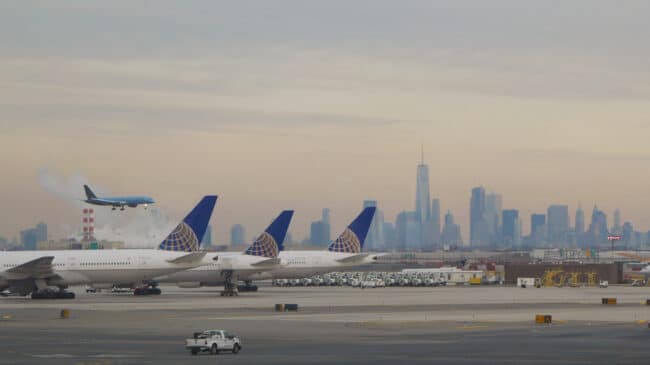United Airlines CEO Scott Kirby was correct to blame a major share of recent New York region flight delays and cancellations on air traffic control shortcomings. The two biggest problems are large shortages of air-traffic controllers in New York region Federal Aviation Administration (FAA) facilities and the most complex airspace in the United States. These problems have been festering for years, but neither Congress nor the FAA have addressed them.
A June 2023 audit by the Department of Transportation inspector general found two critical air-traffic facilities — New York Center (high-altitude) and New York TRACON (approaches and departures) — are grossly understaffed and have been for years. The three most-understaffed airport control towers in the nation are La Guardia, Newark, and Kennedy. The New York/New Jersey airspace is responsible for nearly three-fourths of all US flight delays, because of so many airports and flight paths in such a small area.
FAA ran a 12-year modernization program called Metroplex for 11 complex airport/airspace regions; the program is completed for 10 of these regions, but New York Metroplex was abandoned before it really got started due to local and congressional opposition to any changes in where planes fly.
Giving FAA more money will not solve these problems, because we have a flawed model.
As part of DOT, FAA can’t directly ask Congress for as much money as it needs to improve operations (hiring and training more controllers) and for the many billions it needs to replace aging facilities and technical equipment. Like all other departments, its budget request to Congress is only as much as the White House Office of Management & Budget will allow. Over the past 20 years, money for new facilities and equipment has declined severely as a fraction of the FAA’s annual budget. FAA is also constrained as part of the federal bureaucracy.
Top-notch engineers and program managers are too often recruited away by aerospace and technology companies, giving these companies the upper hand in defining and managing modernization programs.
As the DOT inspector general has documented, these projects typically deliver results years late and considerably over budget.
The problem is that the air-traffic control system is the wrong kind of organization to be housed in a federal bureaucracy. In reality, it is a high-tech service business, best described as a public utility. Nearly all such utilities charge their customers for the services they use; FAA doesn’t.
Utilities pay their operating costs from customer revenue, but they also use their revenue stream to issue long-term bonds to pay for large-scale modernization. FAA can’t do that, either. It subsists on annual appropriations from Congress (along with micro-management). It cannot charge user fees or issue bonds.
Over the past 35 years, country after country has converted its air-traffic department into a public utility. Today, air-traffic control is provided by air traffic control utilities in 83 countries, including Canada, whose system has newer and better technology than FAA.
The idea of taking our air traffic control system out of FAA and converting it into a public utility was part of Vice President Al Gore’s reinventing government project in the 1990s, and the transportation department conducted a large study concluding that this would be feasible — yet Congress balked at approving the proposed legislation.
The idea was revived during the Obama and Trump eras when the Business Roundtable and nearly all the major airlines developed a proposed nonprofit corporation model championed by the House transportation committee Chairman Bill Shuster (R-Pa.). Although his bill was approved by the committee, it faced fierce opposition from the business-jet lobby and rural-state members of Congress, so it died. The large coalition that worked for air traffic control reform disbanded, so there’s no chance of including such a big change in this year’s bill to reauthorize the FAA.
But Congress could take a small step in the public-utility direction. It could remove the air-traffic function (a business) from FAA (a safety regulator), putting them at arm’s length as nearly all developed countries have done since 2001. The new Air Traffic Organization would become a new component of the Department of Transportation, preferably located outside Washington, and given its own (increased) budget, bonding authority, and personnel system.
This modest change offers a path toward fixing some of the problems inherent in the current tax-funded bureaucratic model for US air-traffic control.
A version of this column first appeared in the New York Post.

